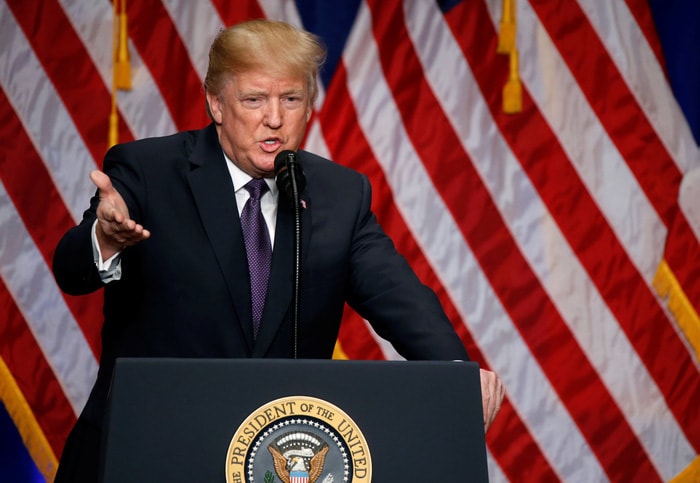US confronts Russia and China in new security strategy
In the early morning of December 19 (Vietnam time), US President Donald Trump announced the first national security policy of his administration. The White House called it a new strategy for a new era of America.
 |
| US President Donald Trump in his speech announcing the new national security strategy. Photo: Reuters |
President Trump's speech at the Ronald Reagan Building in Washington, DC, received strong support from hundreds of people below.
As predicted and previously leaked documents, the 68-page strategy revolves around four main pillars:
- Protect US territory by tightening immigration regulations.
- Promote and protect American prosperity by pressuring and demanding fair trade with China and other countries
- Maintaining peace through military force
- Strengthening America's influence in the world
And despite signs that Mr. Trump wants good personal relationships with his Russian and Chinese counterparts, the new strategy identifies Beijing and Moscow as political rivals intent on challenging American power, security, and prosperity, alongside what Washington sees as regional authoritarian regimes and jihadist terrorists.
In which, the US considers Russia a negative factor in the international arena and Washington considers Moscow an opponent.
The criticism of Russia, expressed in the National Security Strategy, which is shaped by President Trump's "America First" foreign policy vision, reflects a long-standing view among US diplomats that Moscow is actively undermining Washington's interests both at home and abroad.
However, the strategy announced on December 18 (local time) did not directly mention the accusations of Russia interfering in the 2016 US presidential election.
The new US national security strategy also identifies Russia and China as "revisionist powers" amid Moscow and Beijing's "efforts to change the status quo".
“China and Russia want to shape a world that is antithetical to American values and interests. China wants to displace the United States in the Indo-Pacific region, expand the reach of its state-led economic model, and reorder the region in its favor… Russia wants to restore its status as a great power and establish influence near its borders.”
According to an excerpt released by the White House, President Trump's strategy reflects the priorities of the "America First" doctrine: protecting America and its borders, rebuilding the military, projecting power abroad and pursuing trade policies that are more favorable to the United States.
In Asia, the Philippines and Thailand are important US allies and markets. Vietnam, Indonesia, Malaysia and Singapore are seen as growing US security and economic partners. ASEAN, along with APEC, remains central to the Indo-Pacific regional architecture. - A passage in the new US national security strategy affirms - |
Some observers say the strategy also reflects Mr. Trump's realist view that power and influence are competitive, that America must "maintain peace through strength" and protect American interests.
Choosing a building named after the late US President Ronald Reagan to announce the new national security strategy is clearly a meaningful message from the Trump administration.
The first US national security strategy was published in 1987, under President Reagan, who "brought America into an era of self-confidence," according to US National Security Adviser HR McMaster. President Trump's new national security strategy will once again "rekindle that strategic confidence."
The national security strategy plays a vital role in shaping the future policies of the United States. It is seen as a guide for every policy decision-making process, from involvement in wars to national law.
According to Tuoi Tre
| RELATED NEWS |
|---|

